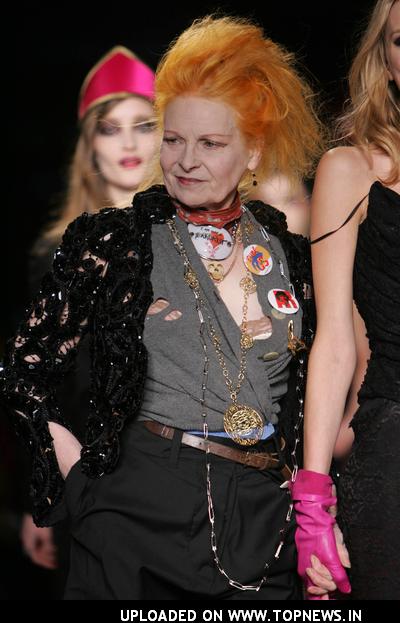It's true that there is a lot of vacuous fashion writing out there, but there is some brilliant fashion journalism too, usually by people who've been around the block, like Lisa Armstrong at the Times whom I first met 20 years ago when she was working on Elle. And here she is, explaining the origins of British style (also taking in class, necessarily, this being Britain):
No discussion of Britain’s sartorial tics proceeds very far before it collides with a cloud front, a rainstorm and the occasional heatwave. The weather doesn’t merely affect the way we dress, it defines it. It may be no exaggeration to say that most of the enduring wardrobe components this country has given to the world – the trench coat, the argyle sweater, the cashmere twinset, the wellington, the sprigged tea dress – arose from a need to combat the elements. As for our other great contribution, thank 1,000 years of military doggedness. Savile Row tailoring wouldn’t exist without Army uniforms. Without tailoring there would be no mods, no Vivienne Westwood, no easily definable system for telegraphing one’s class. Punks wouldn’t have looked nearly so sharp.
Pragmatism may be the fundamental principle on which British style is built. A country which for centuries had no equivalent of la passeggiata, that evening parade in Mediterranean and Latin countries in which beautifully turned-out people stroll along the balmy streets, found more idiosyncratic ways to communicate its sense of chic. Layers, that stand-by of the draughty British home, are something at which we excel, and a habit the rest of the world now emulates, thanks to avatars such as Kate Moss and brands such as Burberry, which took the haphazard approach of chucking on any old ropey jumper over a summer dress, over a pair of woolly tights, and made it look chic and luxurious. Lo, modern eclecticism was born.


6 comments:
Couldn't agree more! She cites all the items of clothing that make me proud to be British. But these are things we must cling onto as modern culture has no place for them. How many young people actually own a raincoat these days? Peter York (style anthropologist and author of 'Sloane Rangers Handbook') is right when he says that there are no tribes anymore, no real rebels. Lisa Armstrong stops at Punk. What happened after that? It has been left to Vivienne to plough a lonely furrow.
New series starting on BBC this Tuesday might give us some insight into this.
Let's see now..what quintessential thing has the US given fashion? I'd have to say denim blue jeans, our 'work uniform'. perhaps the US Navy peacoat(though I don't know that it is something that originated in either the US or the US Navy), cowboy boots?
toby, personally I think the quintessential thing that the US has given fashion is simplicity and sportswear. Even Edith Wharton alludes to a simpler way of dressing in comparison to Europe. Unsung designers such as Claire McCardell and others such as Halston, Anne Klein and early Donna Karan, have all been promoters of this easy, comfortable wearable style.
pixie - I thought about that sense of style and those people as well, and even the use of knits, but I was focused on the first paragraph, really, where she talks about the items which the UK 'gave the world' and how tied they are to place and time. Ralph Lauren, from time to time has mined both American iconic looks(blue jeans and denim of all sorts, cowboy associated anything, American 'frontier') and British iconic(particularly associated with upper class) looks: tartan plaids, fair Isle knits, etc.
....of course I had no bloody idea who Claire McCardell was. Did a search, and I've been gaping in awe at her drapery and artistry ever since.
rosaria, in my opinion she was a woman ahead of her time.
Post a Comment